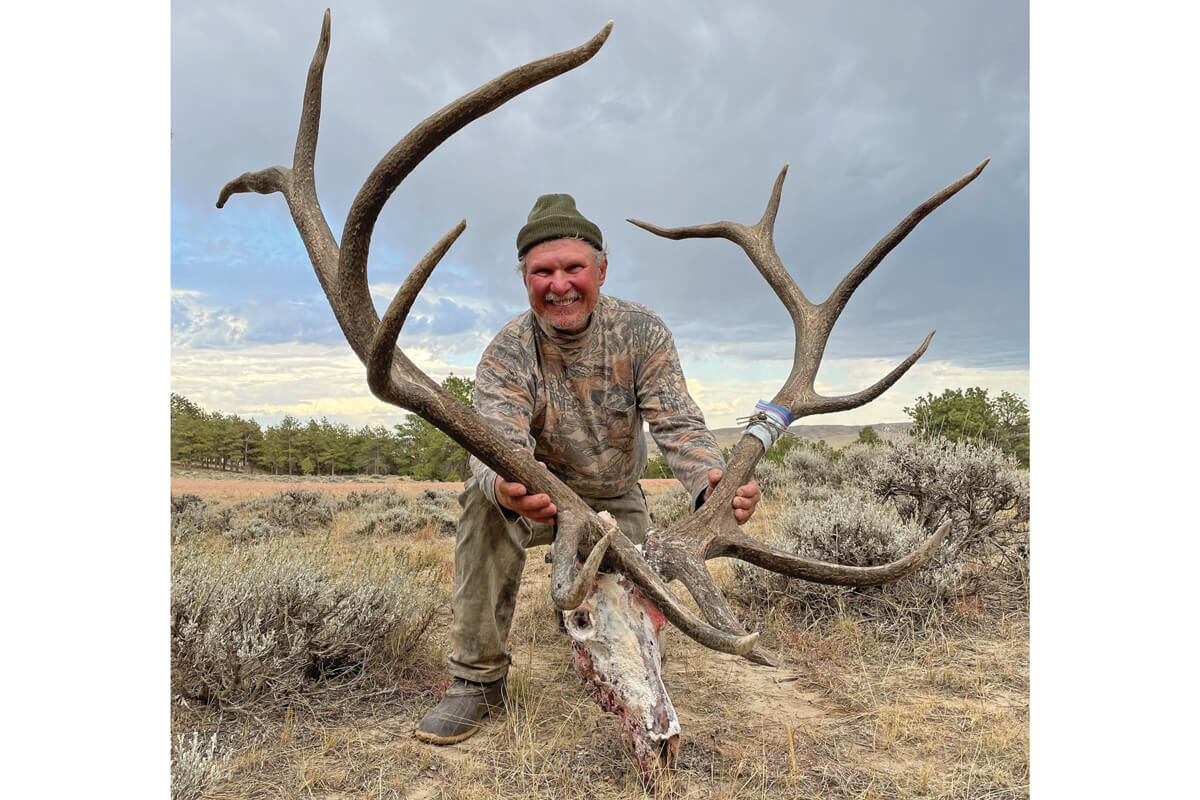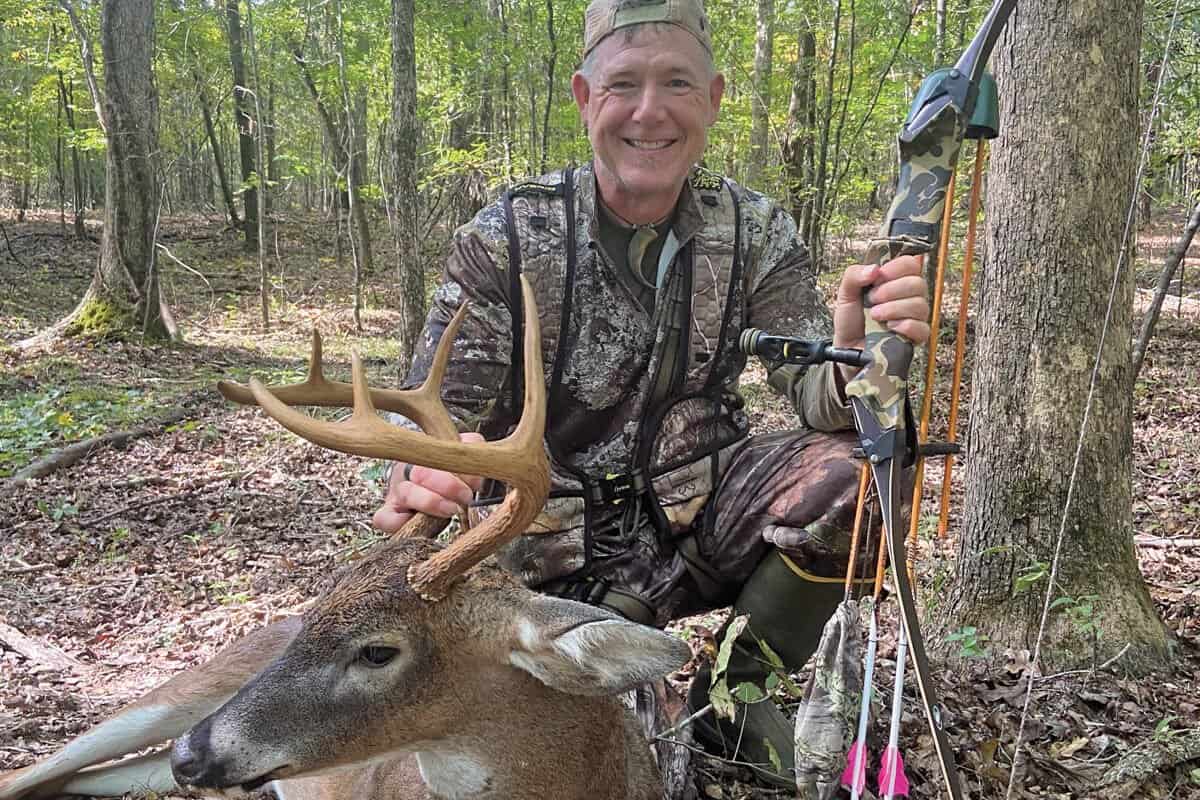Gut shot deer meat can be tainted and should be handled with care. Bacteria from the stomach can spoil the meat.
Field dressing a gut shot deer requires swift action to preserve the meat’s quality. The key is to remove the contaminated parts and thoroughly clean the carcass. Hunters know that a shot to a deer’s vital organs is ideal, but accidents happen, and understanding how to deal with a gut shot deer is crucial.
Contamination from digestive contents can lead to rapid bacterial growth, spoiling the meat and making it unfit for consumption. Quick, careful cleaning and cooling of the carcass can help save much of the meat. Knowledge of proper processing techniques is vital to prevent waste and ensure safety when consuming game harvested with less-than-perfect shots.

Credit: www.bowhunter.com
Assessing The Situation Quickly
When hunting deer, a clean shot is always the goal. However, sometimes a hunter faces the challenge of a gut shot deer. Assessing the situation quickly is crucial to handling it effectively. Making the right decisions in the moments after the shot can impact both the recovery of the deer and the quality of the meat.
Reacting Immediately After A Gut Shot
Time is of the essence when reacting to a gut shot. The following actions should be taken without delay:
- Stay calm. Panic can make the situation worse.
- Mark the location. Use a GPS device or physical marker.
- Observe the deer’s direction of travel.
- Wait. Give the deer time to lie down and expire peacefully.
Once these steps are in place, you can move forward with tracking.
Identifying Signs Of A Gut Shot Deer
Recognizing a gut shot deer requires attention to certain signs:
| Sign | Explanation |
|---|---|
| Arrow/Bullet Exit | A dark, foul-smelling discharge indicates a gut shot. |
| Behavior | A deer may arch its back and move slowly if gut shot. |
| Trail | Look for signs of disturbed foliage and follow carefully. |
| Sound | Gut shot deer may make a distinctive grunt or wheeze. |
Each sign guides the hunter in tracking and ultimately, finding the deer.
Tracking The Wounded Deer
Successfully tracking a gut shot deer requires patience, skill, and the right strategy. The challenge lies in interpreting signs and understanding deer behavior to recover the animal ethically and efficiently. Implementing effective strategies and leveraging technology can significantly increase the chances of locating the wounded deer.
Strategies For Trailing A Gut Shot Deer
Time is crucial after a gut shot. A quick, clean retrieval is not always possible. Patience becomes key. Give the deer time to lie down and expire peacefully. This waiting period can range from a few hours to overnight.
Begin tracking by carefully inspecting the impact site for blood and other signs. Blood with a distinct odor or greenish color indicates a gut shot. Take note of the direction the deer fled to predict its path.
- Monitor the blood trail: Sparse and intermittent, this trail requires a keen eye.
- Search for disturbed vegetation: Broken twigs and displaced leaves can guide you.
- Walk alongside the trail: This preserves evidence and prevents contaminating the scene.
Ensure your pursuit is silent and slow. Loud noises can startle a wounded deer, causing it to run further away.
Using Technology To Aid In Tracking
Modern hunters benefit from advanced tools that enhance tracking efforts. Devices like GPS units and specialized apps can help document the trail and waypoints.
| Technology | Usage |
|---|---|
| Trail Cameras | Monitor movement along anticipated paths. |
| GPS Devices | Track your location and mark blood sign locations. |
| Hunting Apps | Record trails and share with fellow trackers. |
| Thermal Imaging | Identify heat signatures during low visibility or night. |
Remember, while technology aids in tracking, nothing replaces human intuition and experience. Use these tools as a supplement to your tracking skills.
Proper Field Dressing Techniques
When a hunter successfully harvests a deer, proper field dressing is a vital step to ensure the meat is safe and delicious. Field dressing means removing the deer’s internal organs. This step is essential to preserve the meat. It might seem daunting, but with the right technique, you can minimize contamination and cool the carcass swiftly.
Minimizing Contamination During Field Dressing
To keep the meat clean, start by finding a flat surface to lay the deer down. The goal is to avoid dirt and debris. Use clean, sharp knives and wear gloves to reduce bacteria. A clean cut is crucial; avoid puncturing the stomach or intestines. These organs contain bacteria which can spoil the meat quickly.
- Wear gloves to keep hands and meat clean.
- Use a dedicated knife for field dressing.
- Avoid punctures in the gut to stop bacteria spread.
Cleaning And Cooling The Carcass Swiftly
Once the deer is field dressed, cooling the carcass rapidly prevents bacterial growth. Hang the deer or place it in a shaded area if possible. A quick rinse with water can remove blood and debris. Dry the surface afterward to discourage bacteria. Ice the cavity if ambient temperatures are warm. This step keeps the meat at a safe temperature until processing.
| Action | Reason |
|---|---|
| Rinse with water | Removes debris and blood. |
| Dry the carcass | Reduces bacterial growth. |
| Use ice | Keeps meat cool during warm weather. |
Handling And Transporting The Carcass
After a successful hunt, properly handling and transporting your gut shot deer is critical. Careful steps ensure that the meat stays fresh and safe for consumption. Let’s look at the best practices for moving and preserving your deer during transport.
Safe Ways To Move The Deer From The Field
- Use a game cart or sled to minimize contact with the ground.
- If available, two-person lift maintains control and reduces strain.
- For solo hunters, a deer drag harness can prove invaluable.
- Avoid dragging the carcass by the antlers to prevent meat damage.
Preventing Further Meat Spoilage During Transport
Quick and proper transport avoids contamination and spoilage. Follow these guidelines during transit:
| Transport Method | Key Points to Remember |
|---|---|
| Vehicle |
|
| ATV/Bike |
|
Always aim to process or cool the carcass within a few hours. Time is of the essence to prevent spoilage.
Butchering Best Practices
Welcome to the important task of transforming a gut shot deer into safe, edible meat. Ensuring you follow best practices in butchering isn’t just about honoring your game, it’s crucial for the safety and quality of the meat you provide your family.
Trimming Affected Meat Areas
The first step in processing your game is identifying and removing damaged tissue. Proper trimming avoids potential health risks that come with gut-shot deer. This meticulous process ensures that no contamination affects the remaining meat.
- Cut away all areas with evident damage.
- Inspect for discoloration and unusual texture which are signs to trim further.
- Use a sharp, clean knife to ensure smooth cuts.
- Dispose of the affected areas safely and promptly.
Sanitary Butchering Methods
Maintaining cleanliness throughout the butchering process cannot be overstated. A sanitary approach is the backbone of successful deer processing. Keep bacteria at bay and preserve the quality of your meat with these steps:
- Always start with sanitized equipment and a clean workstation.
- Wear gloves to minimize contamination.
- Keep the meat cool and dry to deter bacterial growth.
- Ensure immediate refrigeration or freezing post-processing.

Credit: www.bowhuntingmag.com
Salvageable Cuts And Uses
When dealing with gut shot deer meat, hunters often worry about waste. Yet, parts of the meat remain good for eating. Amid disappointment, the focus turns to identifying edible portions. These portions can transform into delicious meals. Quick action and proper knowledge ensure minimal waste.
Identifying Safe-to-eat Meat Portions
Gut shot meat requires careful examination. Look for changes in color or odor. These are signs of spoilage. Avoid meat with a greenish tint or foul smell. Sides furthest from the gut may still be safe.
Focus on the hindquarters and backstrap. These areas are often unaffected by a gut shot. Do a thorough check. Use safe parts for your recipes.
Creative Culinary Ideas For Compromised Meat
A gut shot does not ruin all culinary hopes. Some recipes allow the use of less-than-perfect venison. Consider these options for compromised meat:
- Grinding for burger: Trim and grind undamaged meat.
- Slow-cooked dishes: Heat can kill bacteria in safe meat areas.
- Jerky: Dehydrating makes thin slices of safe meat edible.
Avoid high-risk cuts. Innovation is key to enjoying your harvest. Trust your senses. They are the best tools for identifying good meat.
Credit: www.quora.com
Frequently Asked Questions Of Gut Shot Deer Meat
Can Gut Shot Deer Meat Be Salvaged?
Gut shot deer meat can be partially salvaged if acted upon quickly. It’s important to remove the affected areas to prevent tainting. Proper field dressing and thorough cleaning are crucial. Nonetheless, expect some loss of meat quality.
How To Identify A Gut Shot Deer?
A gut shot deer often leaves behind a distinctive, dark red or brownish blood trail with plant matter or a strong odor. The arrow or bullet entry point may appear in the rear abdominal area. Immediate tracking is not advised, as it may result in pushing the deer further.
What Are The Risks Of Consuming Gut Shot Deer?
Consuming meat from a gut shot deer carries risks of bacterial contamination and spoilage. The gut content can taint the meat, leading to an unpleasant taste or smell. It can also pose health risks if not properly cleaned and cooked.
How Long After Gut Shooting A Deer Is Meat Good?
The safety of the meat is compromised the longer the deer remains unprocessed. It is essential to begin processing within a few hours to maximize the chances of salvaging the meat. Time, temperature, and the extent of contamination are all critical factors.
Conclusion
Navigating the complexities of processing gut-shot deer is crucial for ethical hunters. Quick action and appropriate cleaning can salvage the meat. Remember these tips and respect the hunt. Managed properly, even challenging situations can yield a rewarding outcome. Honor your game; waste not, want not.


